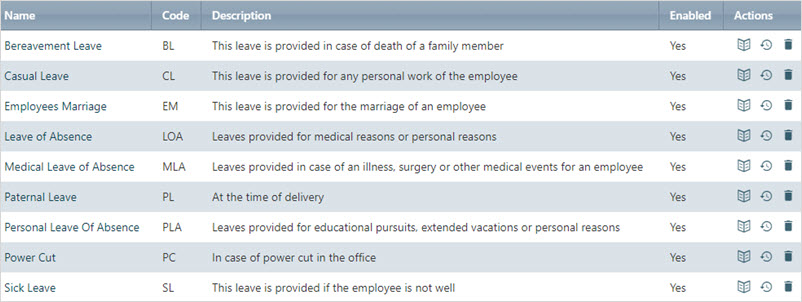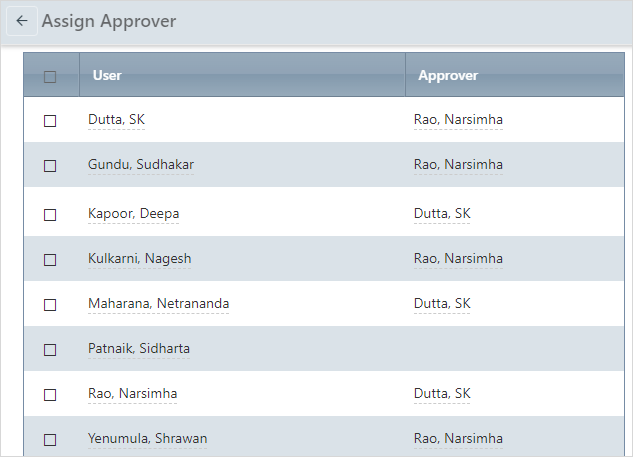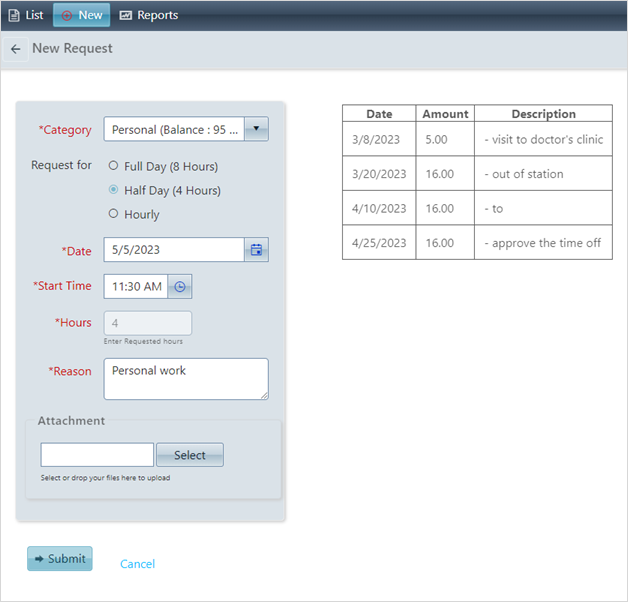Time off policies have long been a common practice in many businesses. However, comprehending and implementing accrual policies can take time and effort. Therefore, this article aims to delve deeper into Time Off accruals to provide a better understanding.
What are accruals in Time Off?
Time off Accruals are a benefit that employees earn or accumulate over a period. These accruals consist of a predetermined number of hours an employee is entitled to as time off.
Employees who do not use these hours will be saved as accruals, which can be carried over or encashed, depending on the company’s policy.
For example, an employee like Jeny, eligible for one day off every month, will have 12 days off in a year. However, if she only uses three days, the remaining nine will be considered accruals. She can use them at her convenience, or they will be carried forward the following year.
How are accrual policies created?
Accrual policies are crafted by HR departments factoring in various elements such as:
- Employee Type (part-time, contractor, intern)
- Years of service
- Designation
HR also determines:
- The number of hours to be allocated for each accrual policy
- The policy should be prorated or not
- If it should permit carry-over or not
- Decide on the accrual frequency, whether it is weekly, monthly, yearly, or the work anniversary date.
- Cap on maximum accrual limits
- Calculations at the beginning of the period (week, month, year) or end of the period.
- If a particular policy should expire after a certain period.
Considering the above factors, the accrual policies are created, and they are different for each employee and can vary from business to business.
How can time off accruals be used?
Whenever you plan on taking some time off, you can quickly check your time off balances to see how much you have available. These leave hours get accrued weekly, monthly, or yearly, So, you can track how much time off you have earned.
Once you know your balance, you can submit a request for time off for specific hours, and if approved, those leave hours will automatically get subtracted from your accrual balance. It’s a convenient way to manage your time off and ensure you always take the right amount of leave.
How do you record or calculate PTO accruals?
Calculating PTO accruals manually can be challenging and time-consuming, especially for large companies. That’s where using Time-off software comes in handy. The software automatically calculates all accruals and displays available balances.
The HR department can create leave categories and accrual policies and set users for each policy based on their years of service or designation. Once a user submits a time-off request and it’s approved in the system, the leave hour balance is adjusted accordingly for the given policy.
This way, managing accruals becomes much easier and more efficient.
For a simple calculation of Time off accruals, kindly refer to our article on: A Guide to effectively utlizing Time Off Accruals
Can I calculate accruals in excel?
Calculating accruals in an Excel sheet is possible, but it’s a complex process that requires creating specific formulas. Additionally, manually inputting employee data is time-consuming and poses a higher risk of data loss or misuse.
Therefore, it is highly recommended that you use software to automate the accrual calculation process, making time-off requests and approvals smoother. The time off software will also allow employees and employers to track their leave balances easily.
How many accrual policies can I create for a leave category?
You can create multiple leave categories and as many accrual policies as you want for each category.
Do accruals expire?
It depends on the policy of the company. For example, some companies have accrual policies that allow the accruals to carry over from one year to the next, but they may have an expiration date.
Other companies may have accruals that never expire, regardless of how long they’ve been carried over. It’s always best to check with your employer to understand their specific accrual policies.
What happens to the unused accruals?
Any unused accruals from the previous year are either carried over to the next year or given to the employee as additional compensation. However, it’s important to note that there may be a limit on how much accrual can be carried over, so not all unused accruals may be eligible for carry-over.
When are the accruals reset?
It depends on the organization. Some companies reset them on January 1st, while others use them on the employee’s work anniversary date.
Are accruals policies the same for all the employees?
Accrual policies differ from employee to employee and from business to business. Therefore, it really depends on the company’s specific guidelines.
For instance, an employee with one year of service may receive 12 accruals per year, whereas an employee with three years of service may receive 18 accruals per year. Additionally, an employee’s level in the organization may also be considered when determining the accrual policy.
What are the benefits of time off accruals?
- Accruing time off can be a great motivator for employees. By having the opportunity to cash in on their earned time off at the end of the year, employees are encouraged to take fewer absences.
- Additionally, for those who have accrued extra leave, they have the freedom to take more extended vacations.
- Knowing how much time off they have available allows employees to plan in advance. This can help with work-life balance and overall job satisfaction.
- Furthermore, this incentive can encourage employees to stay with the company for a longer period.
What would be the best approach to streamline Time off accruals?
- The HR departments must first sort out different leave categories to streamline Time off accruals. These categories may include sick leave, vacation leave, casual leave, study leave, personal leave, parental leave, and more.
- The HR department should develop distinct accrual policies for each category, considering the employee’s years of service, designation, and employment status.
- These policies should also encompass details such as accrual periods, prorate conditions, maximum accrual limits, carry-over limits, and expiry dates, as required.
- Once the policies are established, the Administrator must create a workflow for time off approvals for each user.
- The users can then view their balances and request time off in the desired category for approvals.
- After time off is approved, leave balances are automatically adjusted.
- By having accurate policies in place, calculation errors can be minimized, and payroll processing can be made more efficient.
How OfficeClip Time Off Software Streamlines Accrual Processing?
If you need to track your employees’ leave and manage accruals, OfficeClip Time Off Software has a user-friendly interface that can simplify the process for your business.
With OfficeClip you can:
Create Multiple Leave categories:
Create various Accrual policies for each category:
Set up a workflow for Timesheet Approval:
View balances and request Time Off:
In addition to those features, OfficeClip Time-Off software can also help you manage your time off smoothly by allowing you to set accrual policies for various scenarios.
Other recommended Articles:
- A guide to effectively utilizing Time Off Accruals
- How to design an Effective accrual policy for your business?
Note: This blog has been published in 2018 and has been updated.
Deepa Kapoor is an online writer for small businesses. She loves to write on the advancements of new technologies and how it affects our lives. She always explores ways to make small businesses more profitable. When not writing, she enjoys reading books and cooking exotic traditional food.





